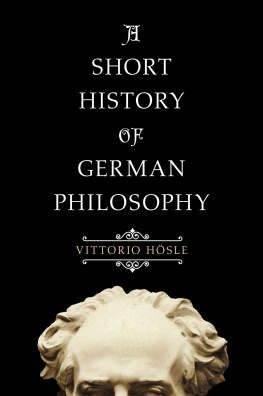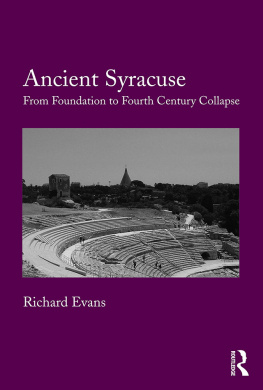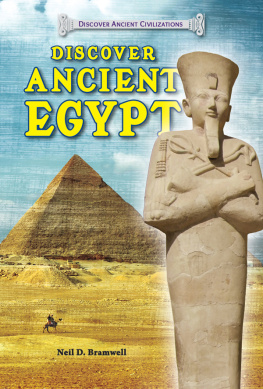Art draws inspiration from divinity. It is none other than the personification of nature which communicates with mankind through the language of terror and admiration, both astonishing and exalting us, raising and lowering us until we come undone. From this spiritual commotion arose the masterpieces of the pen, chisel and paintbrush, passing ultimately into history as yet unparalleled models of imitation.
Art was once the sacred privilege held by the keepers of an ancient knowledge, initiates who served an exoteric function within the nascent Greek civilization in order to unveil the order of human affairs as connected to a universal nature. The entire system of civilization is a symbol of knowledge born out of the arts through which mankind, inspired by great destinies, ascended to truth.
The Greeks portrayed human events on the stage, representing them through the interaction of hidden and invisible beings. Mankind in such tragedies acted according to the will of fate , functioning as a blind tool for an unseen yet powerful being, a covert presence of implacable operation and whimsical vengeance. The audience of these tragedies was thus transported towards a spiritual and divine path, leading to beauty .
Beauty for the ancient Greeks was associated with goodness : that is, an ideal synthesis of human perfection in which a persons exterior beauty and moral value are in harmony, an ideal encapsulated in the Greek term kalokagatha . Beauty was the search for an ideal synthesis of the human body - the perfect proportion between body parts in symmetry and balance as described by Polykleitos in his Canon as the Greek esthetic spirit, a beauty underpinned by numbers and precise relationships. In the Greek world, divinity assumed a human form in the body at its most youthful and vigorous, communicating the idea of a perfect beauty , both incorruptible and immortal. Beauty was also found in the order of the kosmos , in which the harmony of things is represented in the three dimensions of the equilateral triangle or tetraktys which characterizes the physical universe.
Thus, the eternal and universal principle of beauty was a Greek ideal, conceived as a continual revelation of the sacred. It symbolized civilization and an expression of a perfect nature, uniting those parts that made up the whole. Beauty was a gift bestowed from the Gods unto man and thus Art, in all its magnificent splendor, communed with the soul and raised it heavenward. Such knowledge arrived in Greece from Jerusalem and Egypt during the time of Solomon via initiatory practices accessible only to a select few, spreading subsequently to Asia Minor before passing into Persia and Syria. From here, following the route of Ulysses, it landed in Sicily where it followed the migrations from East to West, before ultimately arriving at those two columns that the heroic demigod Heracles had established as the limit of the known world.
By virtue of its geographical position, from the fifth millennium BC the city of Syracuse acted as a bridge between the African, European and Asian continents, functioning as a fertile migratory crossroads for the civilizations bordering the Mediterranean Sea. The city is defined by glory and power, its ruins testifying to its past greatness and to its position as a place where history and culture came together and were immortalized in legend. Such is evident in the low-relief apotropaic metope once described between the citys friezes and triglyphs, depicting a monster with snakes for hair and boar-like fangs: Medusa, the daughter of Phorcys and Ceto, the most beautiful yet only immortal Gorgon, and an archetype of Mediterranean religiosity.
According to legend, one night, Poseidon seduced Medusa in the temple of Athena. The goddess was so angered by this desecration of her temple that she transformed Medusas hair into snakes and ensured that whoever stared into her eyes would be turned to stone. While lying asleep in a cavern, Perseus killed the monster by decapitation and escaped being transformed by using his shield to avoid her direct gaze. From Medusas mutilated neck sprang two sons, the results of her tryst with Poseidon, named Pegasus and Chrysaor. From the streaming blood, red coral and amphisbaena were born. Perseus then showed the severed head to Atlas, who promptly turned to stone. In exchange for the reflective shield, Perseus brought the severed head to Athena who placed it at the center of her aegis , located in the pediment of the Athenaion of Syracuse.
In March 1917, the renowned archeologist Paolo Orsi, in collaboration with Rosario Carta, resumed work on the archeological excavations around the Athenaion within the external courtyard of the Archbishopric. The area was at that time still unexplored and untouched by construction work. One of the most significant discoveries was three walls, the purpose of which was unknown until one of these was identified as a more archaic Deinomenid temples peribolos , (having survived the other two) which once stood in the same spot as the Athenaion. All around, ceramic shards of both Sicel and Hellenic origin were found; ceramic fragments manufactured in bronze and glass paste as well as ornamental and votive objects made of ivory and bone. Among these was the discovery of a large number of ivory and bronze fibulae , which between the seventh and sixth centuries BC would have adorned the peploi of aristocratic Syracusan women as well as piously offered to Athena.
Orsi named these people the Sikeloi or Sicels, following his patient classification and comparative analysis of a rich yet unknown civilization down to the minutest of details. The Sicels were a primitive people who had however reached a decent level of civilization by the third millennium BC with the development of a certain social order. Within Sicel society, Orsi observed the contemporary existence of high-quality artefacts of foreign origin as well as the local populations more low-quality attempts to imitate these. These objects were Aegean in origin, having been brought from the most important cities of the Mycenaean world: Cephalonia and Rhodes.
Orsis work cast an unexpected light on this most complex of issues regarding pre-Hellenic civilization, allowing us to imagine the Sicels in terms of their habits, defensive requirements, daily needs, and funeral rites. His activities initially focused on the exploration of pre-Hellenic necropolises, discovering tombs in which many examples of indigenous craftsmanship had lain untouched for millennia. His stratigraphic excavations revealed the various phases of ancient Syracuse, shining a light on its slow and laborious ascension from the barbaric customs of the Sicels all the way to the early Archaic period, characterized by an influx of Eastern influences and trade as well as the renewal of the magnificent temples of the Dynomenids. They also illuminated the decline of the subsequent centuries and ultimately the end of Greek civilization, following its only remaining features as they permeated into the Roman years and Byzantine civilization.
Orsis interests were not limited solely to the study of paleo-Sicel society, but also covered Hellenic civilization in the center of Ortygia. Following the battle of Himera, the island became the location of an extremely important religious complex. During the fight, the blessing of Athena was said to have manifested itself in a flock of owls, an animal sacred to the goddess, who descended upon the victorious Syracusan army. As a result, the tyrant Gelon, to celebrate his victory and to honor the goddess, demolished the primitive Archaic temple and in its place constructed the Athenaion.









